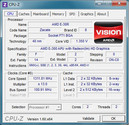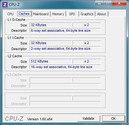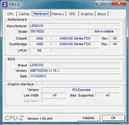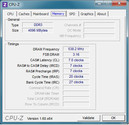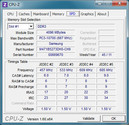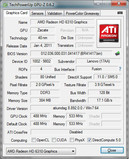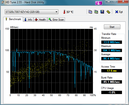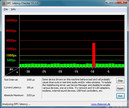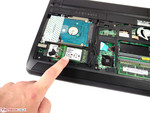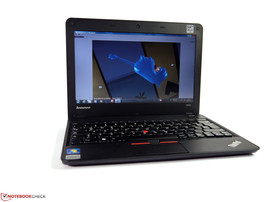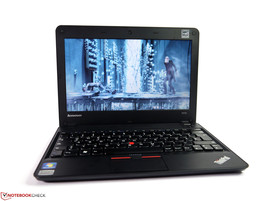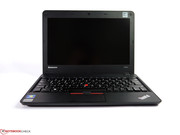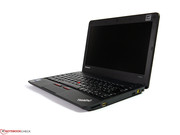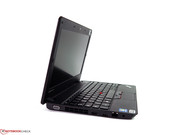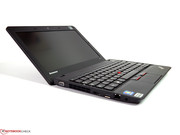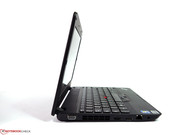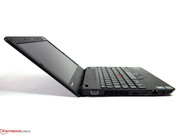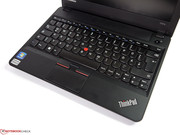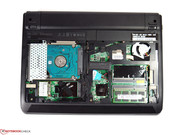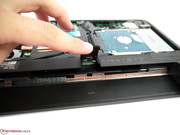Review Update Lenovo ThinkPad X121e (AMD E-300) Notebook

In September 2011, we reviewed the Lenovo ThinkPad X121e featuring an AMD E-350 CPU. In this review, we consider a variant of the X121e that features the AMD E-300 APU, 4 GB RAM, a 320 GB hard drive, and the FreeDOS operating system. This particular variant is in most aspects similar to the X121e already reviewed and, as a result, we will limit our review to highlighting the differences of this variant. Information regarding the features and input devices can be found in the original review.
Both the AMD E-450 APU and an Intel CPU are available for slightly more than our test system with its entry model configuration and the optional Windows 7 that we selected. As a result, we will consider both the performance-to-price ratio and feasibility of this notebook in the course of our review.
Case
As with the previous X121e, the case shows weaknesses in several keys areas such as the touchpad and battery. Users have reported that the casing lifts slightly around the upper part of the display frame and around the wrist rest. While the middle of the display lid has rubber standoffs on the display frame that allow for a good fit, those for the edges of the display are not thick enough to fill the gap when the unit is closed. This does not cause any real issues but can lead to dirt and grime on the display during frequent use. This defect is unlikely to cause serious harm to the display in regular use, but the display is more susceptible to damage if pressure is applied to the display lid directly. This is something that should be avoided in all notebooks, however.
Display
The display in our sample unit is identical to that of the previously reviewed X121e – an 11.6-inch LED-backlit 1366x768 (WXGA) display. Lenovo’s datasheet confirms that the specifications remain unchanged.
The WXGA resolution provides a good balance between available work space and the size of icons and text. This balance is perhaps the only good aspect of the display. Our measurements demonstrated that the display brightness has significantly dropped. The previously reviewed model featured an average brightness of 192 cd/m2 whereas the sample in this review was only capable of an average brightness of 137 cd/m2, reflecting a reduction of 50 cd/m2. This brightness is barely enough for indoor use despite its matte screen. This low brightness may make the unit unusable even under bright interior lighting and represents a clear step backward. This display does not meet the versatility requirements of modern notebooks. The primary benefit of the display – being able to use maximum brightness without a significant increase in battery consumption – is entirely offset by the lack of screen visibility. Contrast, colors, and viewing angles show no discernible improvements over the previous variant. This allows us to conclude that this is one of the worst displays we have reviewed in the past several years.
| |||||||||||||||||||||||||
Brightness Distribution: 75 %
Center on Battery: 146 cd/m²
Contrast: 155:1 (Black: 0.94 cd/m²)
Performance
Compared to the AMD E-350 APU from the previously reviewed X121e, this variant uses the AMD E-300 APU, lacks dual-channel memory support, and has a CPU clock of 1.3 GHz, 300 MHz less than the E-350. The Radeon HD 6310 still serves as the graphics card and maintains its 500 MHz clock speed. The 18 Watt Thermal Design Power (TDP) also remains unchanged.
Processor
It should go without saying that the slower AMD E-300 underperforms the AMD E-350 used in the previous ThinkPad X121e. In our CPU benchmarks, we observed a performance reduction of about 20 percent due to the reduction in CPU clock speed. The E-300 achieved 941 points and 1809 points in Cinebench R10 64-bit Single- and Multi-CPU benchmark tests respectively. By comparison, the E-350 achieved 1158 points and 2196 points in the same tests respectively. The SuperPi 32m test took 2920 seconds instead of 2427 seconds as well.
We observed no throttling due to overheating or power constraints. The included 65 Watt power supply was adequate and the cooling was sufficient to keep the system temperatures quite low.
On battery power, we observed a CPU clock speed reduction. In the Cinebench R10 64-bit tests, the CPU scored 921 points (down from 941 points) and 1794 points (down from 1809 points) for Single- and Multi-CPU tests respectively.
System Performance
In practical use, there is barely any noticeable difference in speed compared to the AMD E-350 model. Productivity programs and light photo editing were both smooth and one could work without interruption. Heavier tasks such as audio and video conversion highlighted the decreased clock speed. For example, converting MP3s using iTunes was done at a 9.2 speed instead of the 11.1 speed achieved by the E-350. By comparison, the Intel Core i7-3610QM CPU achieved a speed of over 50 in iTunes. One might easily experience an increased conversion time of several minutes going from the E-350 to the E-300, depending on the number of MP3s that need to be converted.
| PCMark Vantage Result | 1985 points | |
| PCMark 7 Score | 943 points | |
Help | ||
Storage Devices
The test ThinkPad was equipped with a slim 7 mm (0.28 in) 7200 RPM Seagate hard drive. This drive proved to be relatively fast but also relatively noisy.
A solid state drive (SSD) would definitely improve the performance but would far exceed the total cost of the system. As well, the weaker CPU could potentially throttle the SSD. Our sample did not support any mSATA SSDs. We attempted to use a 64 GB Crucial M4 in this slot and our test notebook was unable to detect it. From this, we conclude that the slot is reserved for 3G modules with integrated antennae.
Graphics Card
The ThinkPad X121e’s graphics card is the CPU-integrated AMD Radeon HD 6310 and features identical technical specifications as in the AMD E-350 APU. We expected worse results considering the weaker CPU. However, we achieved a 3DMark06 score of 2211 points reflecting a 200 point gain over the previous ThinkPad x121e with the E-350 APU. We attribute this performance gain to improved drivers that optimize performance. In 3DMark Vantage, we observed almost identical results with the AMD E-300 scoring 707 points and the E-350 scoring 720 points. The E-350 also came out ahead in the Cinebench R10 64-bit OpenGL shading test with 1881 points compared to the E-300’s 1707 points. These differences are measurable but perhaps not significantly noticeable. In the real world gaming performance of StarCraft 2, the difference corresponds to a reduction of only 2 fps.
On battery power, the Cinebench 64-bit shading test result dropped from 1707 points to 1590 points. This difference was amplified in 3DMark06, dropping the score from 2211 points to 1627 points. It is clear that one should expect graphical performance losses when running on battery power.
| 3DMark 06 Standard Score | 2211 points | |
| 3DMark Vantage P Result | 707 points | |
Help | ||
| low | med. | high | ultra | |
| StarCraft 2 (2010) | 32 | 17 |
Emissions
Our sample ThinkPad X121e generated less heat than the already-cool X121e with AMD E-350 APU. Users will not be limited due to temperature issues as we observed a maximum temperature of 34.7oC (94.5oF) in energy saving mode and with reduced fan activity.
(+) The maximum temperature on the upper side is 33.5 °C / 92 F, compared to the average of 35.9 °C / 97 F, ranging from 21.4 to 59 °C for the class Subnotebook.
(+) The bottom heats up to a maximum of 32.2 °C / 90 F, compared to the average of 39.4 °C / 103 F
(+) In idle usage, the average temperature for the upper side is 29.4 °C / 85 F, compared to the device average of 30.7 °C / 87 F.
(+) The palmrests and touchpad are cooler than skin temperature with a maximum of 30.1 °C / 86.2 F and are therefore cool to the touch.
(±) The average temperature of the palmrest area of similar devices was 28.3 °C / 82.9 F (-1.8 °C / -3.3 F).
System Noise
The noise levels are now more distinct than the two fan speed levels of the E-350 model. At low load levels, the audible noise was in the range of 31 dB(A) when the fans were off to 31.2 db(A) when they were on. This level rose based on system load from 33.2 dB(A) to a maximum level of 35.1 dB(A) when the system was under maximum load. The expected noise level will likely be in the middle of the above range when working under normal conditions.
Noise Level
| Idle |
| 31 / 31.2 / 33.3 dB(A) |
| HDD |
| 32 dB(A) |
| Load |
| 33.2 / 35.1 dB(A) |
 | ||
30 dB silent 40 dB(A) audible 50 dB(A) loud |
||
min: | ||
Power consumption is essentially the same when compared to the previously reviewed E-350 model. Under maximum load, our E-300 based system consumed two to three Watts less. This minor power saving is due to lower clock speeds and lower display brightness.
| Off / Standby | |
| Idle | |
| Load |
|
Battery Life
The previously reviewed sample had a very good life and our current sample is almost on the same level. The lower CPU clock speed and brightness yield better results in Wi-Fi surfing and the BatteryEater Classic Test. In typical usage with maximum brightness, one should expect five to seven hours of battery life.
Verdict
Despite its low price, we do not recommend this configuration of the Lenovo ThinkPad X121e. The dimly lit display, and its corresponding low contrast, is not on par with modern notebooks and limits its usefulness. While battery life, weight, and size are suitable for portability, the impractical display makes no sense.
The reduced CPU clock speed of the AMD E-300 APU is barely noticeable but this speed loss yields no real benefits. The price difference between the E-300 and E-350 is marginal and the battery life difference is negligible.
The case’s build quality and the reaction time of the touchpad remain irritating. The remaining qualities of the system are the low entry price for the Windows-less version, 3G-readiness, and high mobility in terms of battery life, weight, and size. These positive aspects, however, will only appeal to those who are unaware of the rather large drawbacks.


 Deutsch
Deutsch English
English Español
Español Français
Français Italiano
Italiano Nederlands
Nederlands Polski
Polski Português
Português Русский
Русский Türkçe
Türkçe Svenska
Svenska Chinese
Chinese Magyar
Magyar



